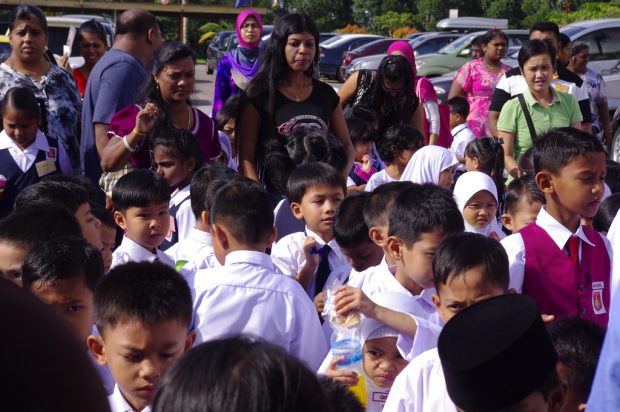Kindergarten – The Blooms Of Malaysia’s Racial Harmony
Malaysian children go to kindergarten, also referred to as preschool, at the age of 4 to 6. Kindergarten is meant to equip children with some basic knowledge of ABCs and 123s and a window to school life.
Kindergarten programme in Malaysia is provided by the Government and several of its agencies, private bodies, and voluntary organizations. Preschools centers are required by law to register with the Government. Public kindergarten charges some token or small registration and monthly fees while private kindergarten charges high registration and monthly fees. According to World Data on Education 7thEdition (Malaysia), 2010/2011, the pioneer in the setting up of preschool in Malaysia has been the Ministry of Rural Development in the early 1970s. In 2007 there was 8,307 preschools setup by the Ministry, commonly known as KEMAS kindergarten, located in rural or suburban areas. Latest figure showed that in 2016, there were about 201,000 or 4-6 years old in government and government-aided preschool, while some 333,000 were enrolled in private kindergarten.
Initially there were 3 main types of public preschool in Malaysia (2007) ie; KEMAS kindergarten with 8,307 classes and total enrolment of about 199,000 or 53 %; Ministry of Education (MOE) kindergarten (5,905 / about 148,000/ 37.9 %) and Unity kindergarten (1,496/ about 39,000/ 9.5 %). As Malaysia progressed, some entrepreneurs saw a business opportunity in providing kindergarten with enriched programmes and thus many private kindergartens were offered. Many parents who can afford the higher fees opted for private kindergartens.
According to the MOE statistics in 2008, nearly 630,000 children aged 4 to 6 were enrolled in public or private preschools programme. About 40 percent were enrolled in the private preschool programme. Some research found that at the early stage, public kindergartens were said to be inferior to private kindergartens which have better materials and facilities. Teachers in public kindergartens too were said to lack professional training. Public kindergarten followed government goals and objectives as compared to private ones which have enriched programmes such as Quran recitation, martial arts, ballet, and swimming classes.
However, most of the minus points of the public kindergarten had been addressed by the government. Teachers at public kindergartens now must have at least a teaching diploma and had gone through proper training while facilities and teaching materials to have been upgraded. Parents from the lower income group with children in public kindergartens would be glad enough if their children graduated from kindergarten able to read and write and have made some friends among their peers. For Muslim parents with children in Islamic kindergartens, they expect their children can read, recite and memorize the Quran, and know how to perform the five daily prayers, apart from the standard achievement of normal kindergarten.
It could be partly due to efforts started by the government, non-profit organizations and also private companies in setting up kindergartens that Malaysia’s literacy rate now is at about 98 percent out of 32 million population, a huge increase from 69.5 percent in 1980. The presence of kindergartens even in the remotest areas contributed to developing the love that Malaysians have for their country as per the main objective of kindergartens. Apart from that most Malaysians too are well mannered and live in harmony despite being multi-racial and multi-religious. Malaysians respect the national language and at the same time master the basics of the English language and their mother tongues.
By Mohamad Nasir Yusoff

























































